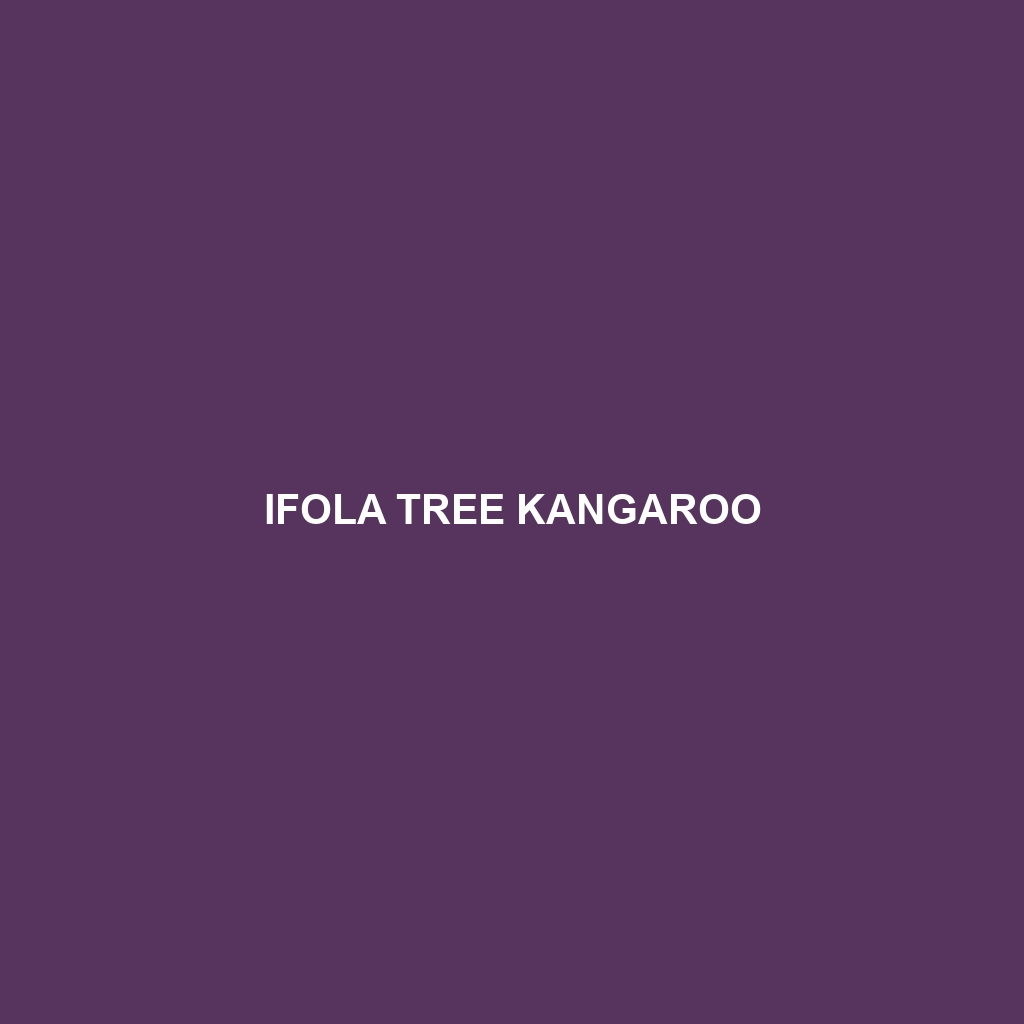Ifola Tree Kangaroo: A Detailed Overview
The Ifola Tree Kangaroo is a rare and enchanting marsupial that dwells primarily in the dense, tropical rainforests of Papua New Guinea. Known for its striking appearance and arboreal lifestyle, this unique species is a testament to the incredible diversity of life in the forest canopy. The Ifola Tree Kangaroo is a fascinating blend of terrestrial and arboreal adaptations, making it a subject of great interest for wildlife enthusiasts and researchers alike.
Physical Characteristics
Size: The Ifola Tree Kangaroo typically measures around 50 to 70 centimeters in body length, with an additional tail length of approximately 60 to 80 centimeters. Males are generally larger than females.
Coloration: Their fur is predominantly a rich chestnut brown, with striking golden-yellow accents on the limbs, face, and belly. This coloration provides excellent camouflage amidst the leaves and branches.
Special Features: One of the most distinctive features of the Ifola Tree Kangaroo is its strong, muscular limbs equipped with sharp claws, allowing it to climb and leap with remarkable agility. Their long, prehensile tail aids in balance and navigation through the treetops.
Behaviors
Social Interactions: Ifola Tree Kangaroos are mostly solitary animals, coming together only for mating purposes. They are known to communicate through a series of vocalizations, including clicks and grunts, to establish territory and avoid conflict.
Feeding Habits: These kangaroos are primarily folivores, feeding on a diet rich in leaves, fruits, flowers, and bark. They are known to be selective feeders, choosing high-nutrient foliage that meets their dietary needs.
Ecological Roles: As key herbivores within their ecosystem, Ifola Tree Kangaroos play a critical role in seed dispersal and maintaining the health of the forest flora. Their browsing habits help shape plant community structures and contribute to forest regeneration.
Habitats
The Ifola Tree Kangaroo inhabits the lush, tropical rainforests of Papua New Guinea, thriving in altitudes ranging from lowland forests to montane regions up to 3,000 meters. These forests provide the complex, multi-layered canopy structure necessary for their arboreal lifestyle. They require dense foliage for shelter and a diverse array of plant species to satisfy their dietary requirements.
Adaptations
Arboreal Adaptations: Adapted to life high above the ground, these kangaroos have developed strong forelimbs and hind limbs for climbing and leaping. Their foot pads are roughened for a better grip on branches.
Prehensile Tail: The long, flexible tail of the Ifola Tree Kangaroo acts as a fifth limb, helping them balance and maneuver through the canopy with ease.
Camouflage: Their unique coloration helps them blend seamlessly into their leafy surroundings, protecting them from predators.
Conservation Status
The Ifola Tree Kangaroo is currently classified as Endangered on the IUCN Red List. Major threats to their survival include habitat destruction due to logging and agricultural expansion, hunting for meat, and the pet trade. Conservation efforts are focused on habitat preservation, anti-poaching measures, and community engagement to protect these remarkable creatures.
Fun Facts
The Ifola Tree Kangaroo can leap distances of up to 9 meters between trees, showcasing its incredible agility.
Unlike their terrestrial relatives, tree kangaroos have evolved to have a more upright posture, which aids in their climbing capabilities.
Ifola Tree Kangaroos have a slow reproductive rate, with females typically giving birth to a single joey after a gestation period of about 44 days. The joey will remain in the pouch for up to 10 months before venturing out.
The Ifola Tree Kangaroo is a marvel of evolutionary adaptation, embodying the beauty and complexity of life in the rainforest canopy. Through concerted conservation efforts, we can help ensure that this extraordinary species continues to thrive for generations to come.
